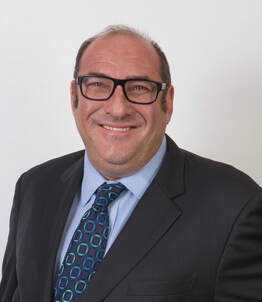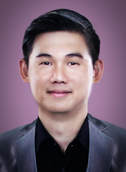 Dr Geoffrey Hall
Dr Geoffrey Hall By Danny Chan
Tell us about your initial interaction with your mentor, Dr Rohit Sachdeva, and how you came to embrace his clinical methodologies?
When I first met Rohit about 10 years ago, he requested me to show him 10 cases that I was doing. I showed him the photos as well as the braces and wires. On two or three of those cases, he predicted that there would be certain problems and specified exactly what to expect.
I was thinking this guy was full of garbage, basing his predictions on the initial photos and seeing some brackets. Photos of two to four months later showed that he was right with every prediction, in every case.
When I started doing my mentorship with Rohit, it felt like my first day in orthodontic school. My business partner Martin Poon, who joined Rohit’s program a year after me, felt exactly the same way.
Rohit trained under Charles Burstone, who is considered the father of orthodontic biomechanics. Rohit is an amazing thinker who managed to distil everything Charlie taught him and put into a methodical practical clinical approach. Those principles he has taught me over time are what we now deliver to our OrthoED students.
The average treatment time for orthodontics is about two years. If you know what you’re doing and using the right force system – which is very easy to understand once you understand the principles – you can treat about 80% of cases in about 14 months. The reason it usually takes others two years is because treatment and tooth movement is out of control and they end up spending a lot of time fixing what should never have happened in the first place.
Rohit’s principals requires not only proper planning at the beginning of the treatment, but also understanding the forces at work. It’s not about putting braces on every tooth but understanding what is going to happen, when it will happen and why.
What are the biggest myths in orthodontics?
Myth 1: The majority of orthodontic cases require extractions. In reality, about 80% of our patients are treated without extractions.
Myth 2: With aligner therapy, all you need to do is put the case in to the aligner company and they will take care of the rest.
If that is true, what’s the difference between a dentist-administered aligner treatment and that supplied from a company like Smile Club Direct? In probably 99% of cases, a system that completely relies on the technician for the set-up without any input from the dentist is likely to fail. I’ve never been involved in an aligner case where I have not modified it at least four times.
The bottom line is, whether for aligner therapy or orthodontic treatment planning, you cannot depend on a one-size-fits-all system. Cookie cutters only work for cookies.
What sort of resistance did you face because you tailored your training courses for GPs, and how did you overcome them?
I’ve received threatening letters from orthodontic bodies – one of them asked me to leave simply because I was teaching general dentists. It’s the only professional body that I know of that actually tells you not to teach other dentists.
The training ethos of the ADA actually encourages specialists to mentor the general dentists and to help them. But I was told not to do that.
How did I deal with that? Unfortunately, with potential litigation and that stopped any further negativity. I used to get upset in the early days but now it’s like water off a duck’s back. My general feeling is if they are upset with me, I must be doing something right.
Perhaps as a form of vindication, I’ve had specialist orthodontists attend my courses over the years – both Smilefast and the full-on orthodontic programs – and not one of them has been able to criticise my teaching or my courses but instead have been full of compliments.
Has the Covid-19 pandemic affected your courses in any way?
It disrupted our physical sessions, but fortunately, also pushed us in a positive way.
Due to Covid-19, we actually set up a dedicated TV recording studio here in my business office in Melbourne. We were able to live-stream all the lectures last year as part of our efforts to deal with the situation. We’ve also kept all the recordings and will be putting them together into an online course that we will be launching in February.
If people cannot make it for our face-to-face courses, they can now choose to attend the online course instead. The physical course attendees will get the online recordings as well, as a refresher education to listen to at their convenience. On top of that, we hold weekly treatment planning sessions and webinars which are included as part of the course program.
The online course was always something we were going to do but the Covid situation fast-tracked it.
What’s the future outlook for you and the profession?
I’ve probably got another five years of practice in me, and maybe eight to nine years of teaching before I say “enough is enough”.
As for the profession, I remember the famous words of Dr David Penn, one of brightest dentists I’ve ever come across.
He believes the future of a dentist is to become a mini specialist. A GP can be a mini specialist in two or more areas of specialty. You will end up in a practice with four to five dentists who cross-refer to each other.
In 10 to 15 years’ time, if you wish to be a specialist orthodontist, you would have to be a really good specialist – treating the toughest of tough patients and you’re going to have to charge accordingly. That’s because increasingly, general dentists will be exposed to the work that used to fall under the domain of specialists.
Unlike the old days when everyone did well, many more dentists will be joining our ranks (and performing orthodontics) in the future and it’s going to be tough for everyone.


 RSS Feed
RSS Feed
